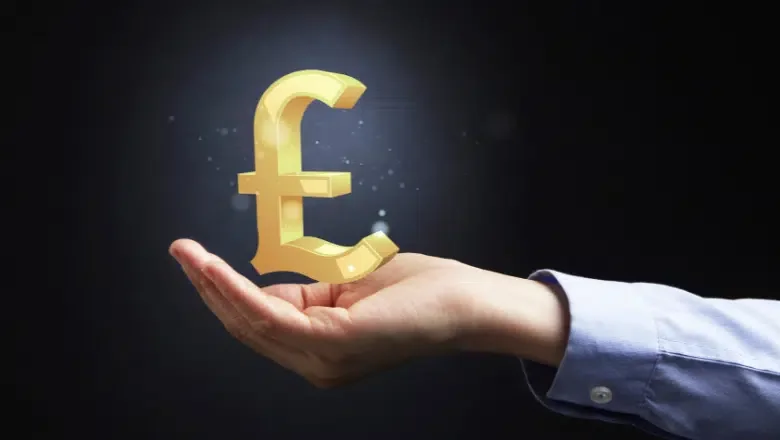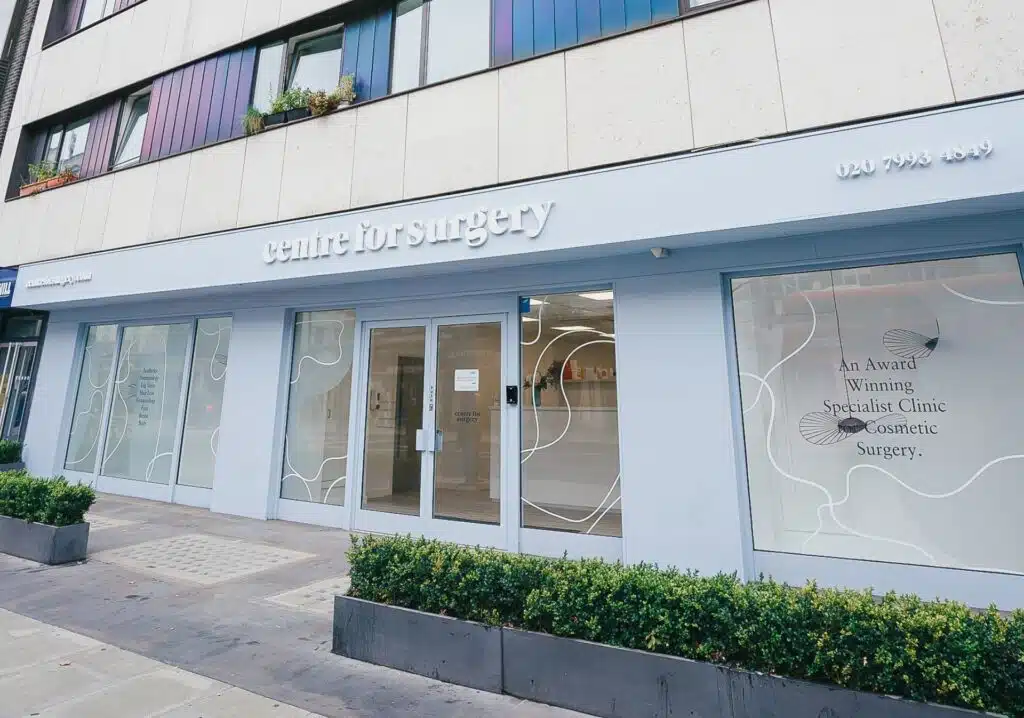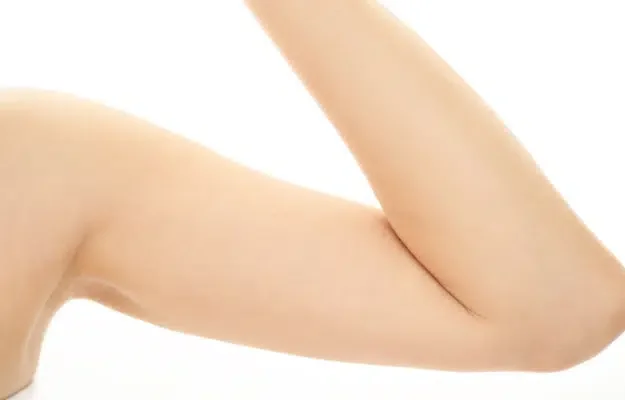Apronectomy in London
Get rid of the belly apron after Massive Weight Loss with Panniculectomy.
If you’re keen on having a flatter and firmer stomach but find yourself struggling with extra skin hanging down, then apronectomy surgery could be right for you. This particular operation focuses only on the lower part of your stomach, giving you a good chance to enhance how you look.
An apronectomy is not the same thing as a tummy tuck or abdominoplasty. They’re different procedures altogether, and apronectomy specifically deals with removing excess skin and fat from the lower belly area.
RELATED: How to Get Rid of Apron Belly
Centre for Surgery is a top-rated plastic surgery clinic based in London. Our team specialises in shaping the body after significant weight loss, and we are experts in surgeries like apronectomy.
What Is Apronectomy?
After significant weight loss, many people have a “belly apron”—excess skin hanging down from the lower abdomen. This is often frustrating because even with a disciplined diet and consistent exercise, that overhang doesn’t seem to go away. This issue usually calls for a more specialised approach than exercise or dieting alone can provide.
RELATED: How To Get Rid Of Stomach Overhang & Belly Fat
An apronectomy, also known as a panniculectomy, is a surgical procedure designed to address this specific problem. It focuses solely on removing the excess skin and fat from the lower abdomen, rather than reshaping the entire abdominal area like a full abdominoplasty (commonly known as a tummy tuck) would. The ultimate goal of an apronectomy is to give you a smoother, flatter, and more defined lower belly by surgically eliminating that bothersome overhang.
Reasons People Choose Apronectomy
Individuals often opt for an apronectomy when they have an abdominal apron that refuses to respond to traditional weight-loss methods. This apron of skin can cause not only cosmetic concerns but also physical discomfort and issues like skin irritation. Therefore, undergoing an apronectomy can offer both aesthetic and functional benefits.
Important Information About Apronectomy
Duration of the Surgery
Typically, an apronectomy takes between 1.5 to 2 hours to complete.
Type of Anaesthesia
The procedure is usually carried out under general anaesthesia, meaning you’ll be unconscious throughout the surgery.
Scarring
Expect a horizontal ellipse-shaped scar on the lower abdomen. The visibility of this scar can vary depending on various factors like your skin type and how well you heal.
Longevity of Results
The outcomes are generally considered to be permanent, especially if you can maintain a stable and healthy weight post-surgery. However, significant weight fluctuations can affect the appearance and longevity of the results.
Benefits of Having an Apronectomy Procedure
Improved Appearance
One of the key benefits of undergoing an apronectomy is that it significantly enhances the appearance of your stomach area. The surgical procedure effectively removes the sagging “apron” of surplus skin and fat that dangles over the pubic region. As a result, your tummy area becomes much smoother, providing a more pleasing look.
Better Freedom of Movement
When the hanging layer of extra skin is taken away, you’ll find that your ability to move around improves considerably. The apronectomy allows for greater comfort during physical activities, making it easier for you to be mobile without any discomfort.
Enhanced Personal Hygiene
The presence of a skin fold or “apron” can often result in hygiene concerns such as skin irritations and potential infections. By removing this excess skin, the apronectomy helps to promote improved personal hygiene, reducing the likelihood of skin issues that could arise from the skin fold.
Relief from Lower Back Pain
In some cases, the extra weight from the skin ‘apron’ can cause discomfort or even pain in the lower back region. By surgically removing this excess weight, some people experience a noticeable reduction in back pain, making their daily life more comfortable.
Encouragement for an Active Lifestyle
After the removal of the excess skin, many patients find it considerably easier to engage in physical activities and exercise regimes. This renewed ease of movement can be highly motivating, encouraging individuals to lead a more active lifestyle, which in turn can assist them in maintaining a healthy weight.
Who Is a Good Candidate for Apronectomy?
If you’re considering an apronectomy, there are specific criteria you’ll need to meet to be a suitable candidate for the procedure. The operation should offer long-term clinical benefits, and it’s up to your surgeon to determine if it’s the right fit for you. Here are some key considerations:
BMI
Your Body Mass Index (BMI) should ideally be equal to or less than 30 to qualify for this surgery.
Recent Weight Loss
You should have recently undergone significant weight loss that has left you with excess, hanging skin in the lower abdominal area.
Stable Weight
It’s recommended that you maintain a stable weight for at least 12 months before the procedure. This is important for achieving more permanent results post-surgery.
Over 18
Patients must be over the age of 18 to qualify for the surgery. While most candidates are older, it’s not uncommon for younger adults to undergo an apronectomy as well.
Non-Smoker
Patients are advised to quit smoking well before the procedure. Smoking increases the risk of complications both during and after the surgery. Ideally, you should quit smoking 4 to 6 weeks before the surgery and remain smoke-free for at least four weeks afterwards. Doing so can reduce wound complication rates by up to 50% and also give your lungs a break, improving your overall health.
Purpose
The procedure should offer a long-term clinical benefit. This could be relief from symptoms like irritation, inflammation, or tissue swelling associated with the overhanging abdominal apron. Additionally, it could also be for cosmetic purposes to improve the aesthetic appearance of the lower abdomen.
Overall Health
Apart from these specific criteria, you should be in good overall health, without any medical conditions that could complicate surgery or recovery.
RELATED: Panniculectomy vs. Tummy Tuck
How is the Apronectomy performed?
The apronectomy is a relatively straightforward surgical procedure that focuses on the removal of excess skin and fat from the lower abdomen. Here’s a step-by-step breakdown of how it is typically carried out:
Anaesthesia
Before the procedure begins, you’ll be given general anaesthesia to ensure you’re comfortable and unaware throughout the surgery.
Incision
Your surgeon will make a carefully measured horizontal elliptical incision just below the belly button and above the pelvic area. This incision line is planned to allow for the optimal removal of the overhanging tissue while minimising visible scarring.
Skin and Tissue Removal
The surgeon will then remove the targeted excess skin and fat through the incision, eliminating the “apron” of overhanging tissue.
Closure
After the removal, the incision will be closed with sutures. Sometimes, surgical drains (tubes) are placed to prevent fluid accumulation at the surgical site.
Scar
The procedure will result in a scar across the lower abdomen, similar in appearance to a caesarean section scar, although it could be longer depending on the amount of tissue removed.
An apronectomy won’t address issues in the upper or middle abdomen, nor will it repair separated abdominal muscles. The entire procedure usually takes between 1.5 to 2 hours, contingent on the amount of tissue that needs to be removed.
Post-Treatment Care and Recovery
After the surgery, patients are generally allowed to go home on the same day. If drains were used, they would typically remain in place for 24 to 48 hours before being removed.
Why People Opt for an Apronectomy
The primary motivation for many individuals is to alleviate symptoms caused by excess skin, such as irritation, blistering, and rashes. Removing this extra tissue not only improves the physical appearance of the lower abdomen but also can significantly enhance mobility and encourage a more active lifestyle.
While many undergo this surgery for cosmetic reasons, an increasing number of people are opting for an apronectomy to improve their overall quality of life. By removing this hindrance, patients often find it easier to be more physically active, which has positive ripple effects on their general health and well-being.
What’s the Difference Between Apronectomy and Abdominoplasty (Tummy Tuck)?
The abdominal region is commonly affected by various life changes, such as pregnancy, fluctuations in weight, and ageing. When someone loses a considerable amount of weight, they may develop an “apron,” also known as a pannus, which is an overhang of skin and tissue that covers the pubic area. To address this issue, two main surgical options are available: apronectomy and abdominoplasty (commonly known as a tummy tuck).
How Do These Procedures Differ?
Extent of Surgery
One common question people have is, “Is abdominoplasty a major surgery?” Abdominoplasty is generally more extensive than an apronectomy and comes with a broader scope of changes. It may also pose more risks due to its complexity.
Target Area
An apronectomy focuses solely on removing the hanging apron of tissue from the lower abdomen. It does not involve any tightening of the abdominal muscles or removal of excess tissue from the upper or middle abdomen.
Techniques
Abdominoplasty, on the other hand, addresses the entire abdominal area. It not only removes excess skin and fat but can also tighten weak or separated abdominal muscles, providing a more comprehensive reshaping of the abdomen.
Muscle Tightening
Abdominoplasty often includes the strengthening of the abdominal wall muscles, making it a popular choice for those looking to address both excess tissue and muscle laxity.
Why Choose Apronectomy Over a Tummy Tuck?
The choice between an apronectomy and a tummy tuck largely depends on your individual needs, preferences, and medical considerations. Here are some reasons why you might opt for an apronectomy:
Less Invasive
If you want to avoid a more extensive surgery and some associated potential risks, an apronectomy is a less invasive option.
Specific Concerns
If you are primarily troubled by symptoms associated with the overhanging abdominal apron, such as tissue swelling, discomfort, and inflammation, then an apronectomy can directly address these issues without affecting other areas.
Ideal Weight
To make the most of an apronectomy, it’s beneficial to be close to your ideal weight or Body Mass Index (BMI). It’s essential to note that surgeons will generally only operate on non-smokers with a BMI of less than 30 for this procedure.
RELATED: Medical Benefits of a Tummy Tuck
Recovery Process After an Apronectomy
The journey to full recovery after an apronectomy involves several stages and varies from individual to individual. However, the recuperation time is generally quicker compared to a more extensive surgery like a tummy tuck. Below is a more in-depth look into what you can expect during your recovery period.
Immediate Post-Surgery Period
Initial Rest
Right after the surgery, your surgeon will provide specific instructions on how to manage the surgical wound. You’ll be encouraged to take it easy and avoid strenuous activities.
Follow-Up Appointments
Although you’ll be discharged and sent home, it’s essential to make follow-up visits to the clinic to have the wound and dressings assessed.
First Week Guidelines
During the first week, plan to stay at home. Your medical team will recommend light activities like showering and going for gentle walks around the house.
Activity Limitations:
Avoid Heavy Lifting
In the initial weeks, it’s crucial to steer clear of demanding physical tasks and heavy lifting. These could put undue pressure on your healing abdominal muscles.
Abdominal Binder
To aid in the recovery process, you will be provided with an abdominal binder—a special medical garment designed to support the abdominal region and encourage natural healing.
Second Week and Beyond
Venturing Outdoors
By the second week, you may start to feel well enough for short walks outside. This gradual increase in activity helps with circulation and overall well-being.
Time off Work
Your doctor will likely recommend taking some time off from work to ensure your body has adequate time to heal without stress or strain.
Physical Exercise
If you enjoy working out, your doctor will advise you on when it’s safe to return to your fitness routine. The key is not to rush this process, as you don’t want to jeopardize the healing.
General Health
Stay Hydrated
Proper hydration is essential for optimal healing. Make sure to drink plenty of water throughout the day. Well-hydrated cells function better, which in turn, can speed up your recovery.
Regular Check-Ups
Schedule and attend regular medical examinations to monitor your healing progress. These check-ups allow your surgeon to make timely adjustments to your care plan if necessary.
Adjustments to Treatment
If there’s a change in the rate or manner of healing, your surgeon can tailor your treatment accordingly to ensure that you’re on the right path to recovery.
Risks and Possible Complications of Apronectomy
Undergoing an apronectomy, like any surgical procedure, involves certain risks and possible complications. It is crucial to be thoroughly informed to help mitigate these risks. Here, we explore the potential issues that may arise during and after the procedure.
Risks Associated with Anaesthesia
Anaesthesia, though generally safe, can occasionally cause complications. Some patients might experience allergic reactions to the anaesthetic agents used, although this is quite rare. Respiratory difficulties are another concern, particularly in individuals with pre-existing respiratory conditions.
Surgical Risks
One of the inherent risks of any surgery is the possibility of infection at the site of the operation, despite the use of sterile techniques. There is also a risk of excessive bleeding during or after the procedure, which might necessitate further interventions.
Post-Surgical Risks
After surgery, there are several risks that patients need to be aware of:
- Nerve Damage: There is a potential for nerve damage, which can lead to a loss of sensation or movement in areas around the surgical site.
- Fluid Build-Up: Known as seroma, this complication may require draining if it occurs.
- Scarring: Some degree of scarring is inevitable, but there is a risk of developing hypertrophic or keloid scars, which are more prominent and raised.
- Temporary Numbness: The area affected by the surgery may experience temporary loss of sensitivity.
- Prolonged Swelling: Swelling, or oedema, can persist longer than anticipated and may require specific management techniques.
Discussing Risks with Your Surgeon
Have a detailed discussion with your surgeon about all possible risks and complications before proceeding with the surgery. A comprehensive consultation helps balance the benefits against the potential drawbacks, enabling you to make a well-informed decision.
Reducing Surgical Risks
- Follow Pre-Surgery Recommendations: Adhering to the guidelines provided by your surgeon can significantly lower surgical risks.
- Quit Smoking: Smoking can impair lung function, interfere with wound healing, and heighten the risk of surgical infections.
- Diet and Lifestyle: A balanced diet and healthy lifestyle enhance your immune system, aiding in recovery and reducing complications.
- Full Disclosure: Being completely transparent about your medical history and any medications you are taking is crucial. This information allows your medical team to anticipate and prepare for any possible complications.
How Much Does an Apronectomy Cost?
Understanding the financial aspect of any medical procedure is crucial, and an apronectomy is no different. At Centre for Surgery, we strive to provide a transparent pricing structure to help you make an informed decision.
Initial Price Estimates:
For a specific and tailored cost breakdown of your apronectomy procedure, we invite you to reach out to Centre for Surgery directly. Our team of experienced professionals will guide you through the consultation process, which will help determine the cost based on your individual needs and requirements.
Components of Cost:
The overall price of an apronectomy can vary depending on several factors, including:
Surgeon’s Fees
Highly qualified and experienced surgeons may have higher fees.
Facility Costs
These cover the use of the facility and surgical suite.
Anaesthesia Fees
Depending on the anaesthetic used, the cost can differ.
Postoperative Care
This includes any follow-up visits, wound dressings, and medications prescribed post-surgery.
Financing Options:
We understand that undergoing surgery is a significant financial commitment. That’s why Centre for Surgery offers a range of financing options from Chrysalis Finance designed to make the procedure more affordable for you. From interest-free plans to extended payment schemes, we can help tailor a financial package that fits your budget.
Importance of Consultation:
A consultation with our medical team is not just a mere formality; it’s a crucial step in understanding your needs and offering the best possible care. During the consultation, you’ll receive a detailed price quote that reflects the complexity of your specific case, ensuring no hidden surprises later on.
Post-Surgery Costs:
Sometimes, people overlook the post-surgery expenses that might arise. These could include additional medications, further medical consultations, or even unforeseen complications that may require additional procedures. At Centre for Surgery, we aim to provide a comprehensive cost overview that also helps you prepare for any post-operative expenses.
Insurance:
Some patients choose to use their medical insurance to cover part or all of the surgery costs. If this applies to you, it’s essential to check with your insurance provider and with Centre for Surgery to confirm what is covered.
By reaching out to Centre for Surgery, you can receive a personalised and detailed estimate that considers all these elements, ensuring you are fully informed about the financial investment involved in an apronectomy. Feel free to contact us for a comprehensive consultation and to explore the various payment and financing options available to you.
Why Choose Centre for Surgery for Your Apronectomy Procedure?
At Centre for Surgery, we pride ourselves on offering world-class care and an exceptional surgical experience, from consultation to post-operative care. Here’s why you should entrust us with your apronectomy journey.
Expert Surgeons
Our team consists of highly skilled and experienced surgeons who specialise in various aspects of plastic surgery, including apronectomy. We remain committed to staying at the forefront of advancements in the field to provide you with the safest and most effective treatment options.
Comprehensive Consultation
We believe that the best outcomes start with a thorough consultation. You’ll sit down with one of our expert surgeons to discuss your goals, medical history, and any concerns you might have. This ensures a tailored treatment plan designed just for you.
State-of-the-Art Facilities
Our clinic is equipped with cutting-edge technology and follows the highest standards of hygiene and safety. When you choose Centre for Surgery, you’re choosing a facility that prioritises your well-being.
Exceptional Aftercare
We understand that the surgical journey doesn’t end when you leave the operating room. Our comprehensive aftercare program ensures you have all the resources and support needed for a smooth and speedy recovery.
Real Patient Testimonials
Don’t just take our word for it—listen to what our satisfied patients have to say.
“My experience at Centre for Surgery was fantastic from start to finish. The staff were incredibly friendly, and the aftercare was excellent. I felt supported throughout my recovery.”
– Jane, 45“I had my apronectomy at Centre for Surgery, and the results exceeded my expectations! Not only has my quality of life improved, but the staff also made sure that I was comfortable throughout the entire process.”
– Mark, 52
Easy Financing Options
Worried about cost? We offer various financing options to make the procedure more accessible to you.
Informative Blog
Looking to gain more insight into apronectomy or other plastic surgery procedures? Our comprehensive plastic surgery blog is a valuable resource that can answer many of your questions and concerns.
Ready to take the next step towards a more confident you? To book a consultation, contact us via:
- Phone: 0207 993 4849
- Email: contact@centreforsurgery.com
- Address: 95-97 Baker Street, London W1U 6RN
Centre for Surgery is not just a clinic; it’s a community where every patient is a priority. Choose us for your apronectomy, and you’re choosing quality, care, and unparalleled expertise.
Further Reading and Medical References about Apronectomy
FAQs
-
What's the medical term for a hanging stomach?If you have a stomach that hangs down over your pelvis, making it look like an 'apron' of fat, that's medically referred to as an "abdominal panniculus" or just "pannus." This hanging skin can be quite uncomfortable and may also stretch over other parts of your body, like your knees, hips, or thighs. However, it's important to know that an apronectomy will only deal with the skin hanging over your lower abdomen.
-
Will an Apronectomy Get Rid of My Stretch Marks?An apronectomy can possibly remove some of your stretch marks, but it really depends on where these stretch marks are located. If your stretch marks are found on the specific area of skin that's going to be taken away during the surgery, then yes, those particular stretch marks will be removed. However, it's important to note that if you have stretch marks above your belly button or on other parts of your body, those will still be there after the procedure.
-
Can I Become Pregnant After Having an Apronectomy?Yes, it's entirely possible to get pregnant after you've had an apronectomy procedure. However, medical experts generally advise that you should consider having this procedure only after you're certain you've completed growing your family. The reason for this recommendation is that becoming pregnant after an apronectomy can stretch out the skin on your abdomen, which could potentially undo the improvements made by the surgery. In other words, the results of the apronectomy might not hold up as well if you become pregnant afterwards.
-
Is Apronectomy better than a Tummy Tuck?Both an apronectomy and a tummy tuck (also known as abdominoplasty) have their advantages. If you're looking to reshape your entire abdomen, a tummy tuck is usually recommended. An apronectomy, on the other hand, is more focused, targeting just the skin hanging down over your lower abdomen. Because it's a less extensive surgery, you might find that the recovery time for an apronectomy is quicker.
-
What kind of anaesthesia is used for an Apronectomy?For most apronectomies, general anaesthesia is used. This ensures you're fully unconscious and can't feel pain during the operation. The type of anaesthesia that will be used is something you'll discuss with your surgeon during your initial consultation to make sure it's the best option for you.
-
How much time does the Apronectomy procedure take?Generally, an apronectomy can take anywhere from 1.5 to 2 hours to complete. While it's not considered a very long surgical procedure, it's still a detailed operation that requires a lot of skill. So, don't be surprised if it ends up taking a little longer than the estimated time.
-
Will the Apronectomy procedure hurt?You won't feel any pain during the apronectomy because the surgery is performed under general anaesthesia. You'll be unconscious during the operation. However, you can expect some discomfort or pain once you wake up, as your body will be in the process of healing. The good news is that this pain is generally manageable with prescribed medication. Consult your doctor about the best pain relief options for you.
-
Can an Apronectomy give you permanent results?The long-lasting effects of an apronectomy depend on how well you take care of your body post-surgery. If you manage to maintain a stable weight, the results can last a long time. However, if you're not mindful about exercise, diet, and overall wellness, it could be hard to keep the surgical benefits for the long term. To sustain the results, you might want to consult with a healthcare professional or dietitian for advice on a healthy routine.














